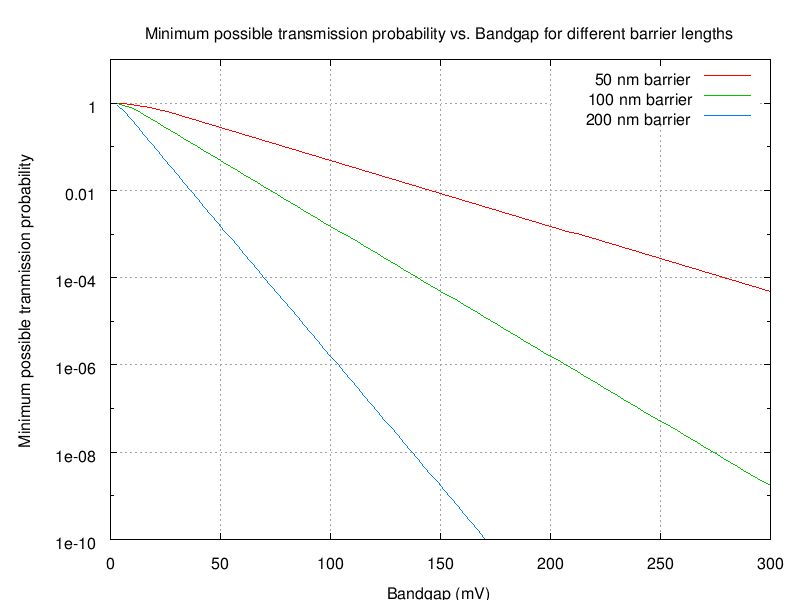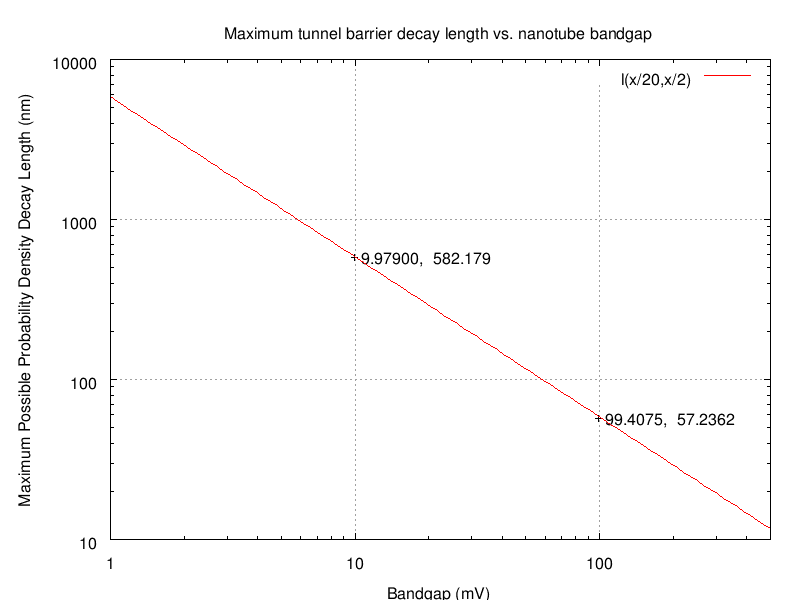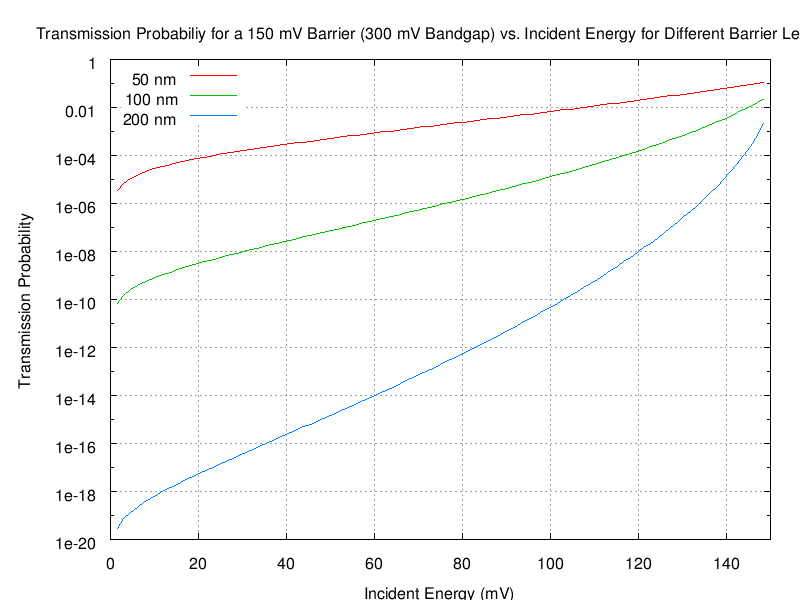
Some useful numbers:
| Parameter | Value |
| Density of states | Ef = 0.48 mV per e/um |
| Level Spacing | hbar vF / 2 = 1940 meV nm = 1.94 meV um |
| Band gap (pure semiconducting) | gamma_0 * a / d, 1.42 nm = 290 mV |
| Effective Mass | m* / me = Eg / 2 / 5.12 eV |
The calculations for these numbers, and the tunnel barriers transparencies discussed below, are outlined in a pdf here. Note that I have used a_0 defined as the bond length (0.142 nm), and have taken gamma_0 = 2.9 eV.
If you want to make a tunnel barrier in a nanotube, the maximum barrier height you can achieve is Eg/2: ie. aligning the fermi level at the middle of the band gap. Thus, if you want an opaque tunnel barrier, it is better to have a large bandgap.
There is another interesting effect, however: in NTs, the effective mass is also linearly proportional to the bandgap. Thus, with a smaller bandgap, you are not only limited it how large a barrier you can create, but your electrons can also more easily tunnel through the barrier since they have a smaller effective mass.
Below are some calculations of the maximum tunnel barrier resistance, ie. minimum possible barrier transparency, for various sets of parameters. For a nanotube, there are 4 transverse modes, so you can calculate the conductance by multiplying the transmission probably by 4e^2/h.
All of these calculations of barrier transparency also apply directly to single layer graphene, assuming you can find some way to induce a gap in the energy spectrum. Note, however, to obtain tunnel resistances, you will also have to count the number of transverse modes impinging on your barrier. (In nanotubes, we can in practice take one transverse mode nearly all the time since the lateral confinement is so strong...)


